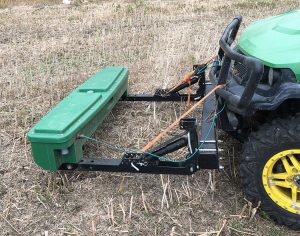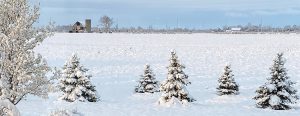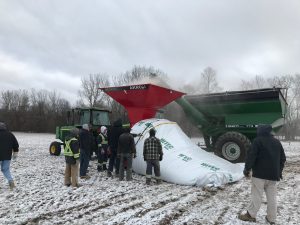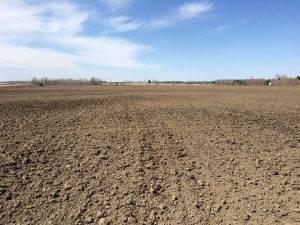Cover crops
AGRONOMY BASICS FOR BETTER MANAGEMENT
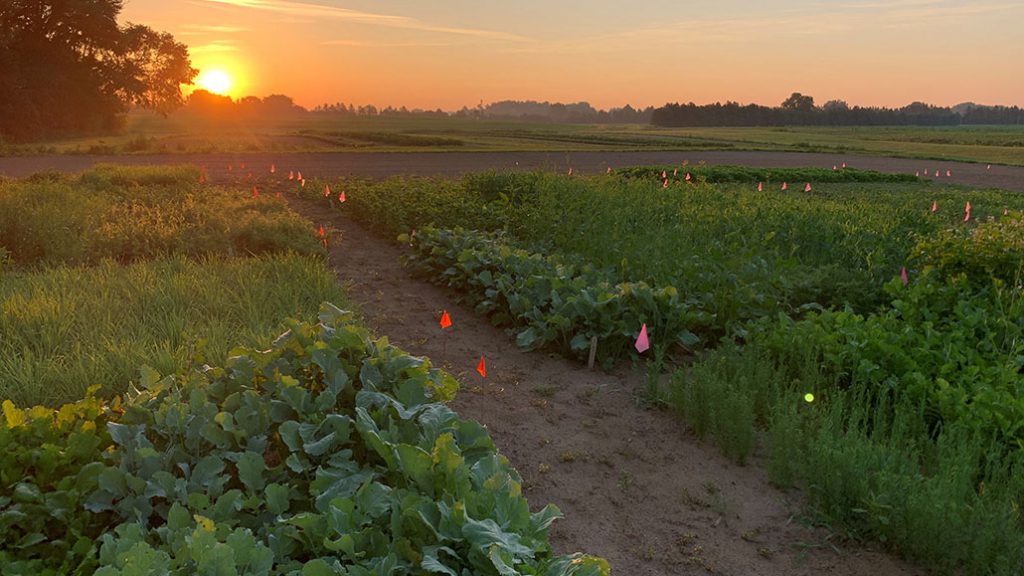
WHEN SOIL MANAGEMENT specialist Anne Verhallen thinks of agronomy, she thinks of the Ontario Ministry of Agriculture, Food and Rural Affairs’ (OMAFRA’s) Agronomy Guide for Field Crops. It’s a comprehensive resource with specific seeding, tillage, fertility, pest management, and harvest recommendations based on more than 100 years of research.
| WHAT YOU NEED TO KNOW • All cover crop practices should begin with setting goals. • Once goals have been established, farmers should select cover crop species that best fit their needs and are suitable to their location. • Understand the benefits of drilling for cover crop establishment. • Farmers should terminate a cover crop the way that works best for them and seek advice from neighbouring farmers with the same soil type. • Look for more information on cover crops in our April/May magazine with a focus on long-term research trials. |
But when it comes to cover crops, limited agronomic recommendations are available because long-term agronomic research does not exist.
Although cover crop species have been studied for many years, research has primarily been focused on determining and proving environmental benefits. As practice adoption continues to increase, the need for more agronomic information is also growing.
“If you’re going to invest time, effort, equipment, and money, it’s time to get serious about growing cover crops,” says Verhallen. “We don’t have all of the agronomy research done — and we won’t for a while — but we do know that many of these crops behave very much like cash crops. This means we can apply the basics of field crop agronomy and use existing tools to improve management.”
At the recent Ontario Agricultural Conference, Verhallen collaborated with other OMAFRA specialists, University of Guelph researchers, and farmers who were early adopters of cover crops to share experience-based recommendations during the Cover Crop Agronomy session.
STEP 1: SET A GOAL(S)
Laura Van Eerd, professor of sustainable soil management at the University of Guelph, says all cover crop practices should begin with setting goals. She cites wind erosion, waterway protection, weed control, and building soil carbon as examples of such objectives.
The Midwest Cover Crop Council’s online decision tool (mccc.msu.edu/covercroptool) prompts users to select up to three goals before displaying recommendations. The goals listed range from interseeding with a cash crop and nitrogen growth to lasting residue and good grazing.
STEP 2: CHOOSE A COVER CROP(S)
Once goals have been established, farmers should select cover crop species that best fit their needs and are suitable to their location. The decision tool provides an updated list of crop recommendations by county and includes recommended planting dates.
“Spring cereals like barley or oats are almost a no-brainer because they are inexpensive, we see fast establishment, they have a great root system, and we can feed them,” says Verhallen, who saw faster out-of-the-ground growth in barley compared to oats in trials last summer.
When it comes to winter cereals, OMAFRA cereals specialist Joanna Follings says winter wheat is often used to improve soil health, alleviate compaction issues, and provide cover for the entire winter.
Winter triticale is similar to winter wheat in hardiness but has good early season vigour and provides quick coverage.
When farmers are looking for more weed suppression, allelopathic qualities, or hardiness, Follings points to winter rye. It is often recommended to farmers who want a forage crop that they can graze livestock on or use to create baleage. University of Guelph research has also shown that winter rye can reduce populations of glyphosate-resistant Canada fleabane.
“Another cereal crop that is making a bit of a comeback in Ontario is winter barley,” says Follings.
But winter barley is not as winter hardy as wheat or rye so it needs to be planted at least seven to 10 days before the optimal winter wheat planting date. Barley also requires an increased seeding rate because when planted late, it cannot manipulate tillers the same way winter wheat can.
“Radish and other brassicas are good additions to our cover crop toolbox,” says Verhallen. These crops, including kale, mustard, and turnip, are fast growing, great nitrogen scavengers and some of them winter kill.
She adds that buckwheat is a cover crop option that has received mixed reviews in Ontario. It is a fast-growing smother crop that supports pollinators and has a fragile root system that builds soil structure. The caution is that buckwheat can flower within four weeks and can have seed set within six weeks.
STEP 3: PLAN ESTABLISHMENT
In terms of cover crop establishment, Verhallen understands that it is easier for most farmers to broadcast seed but wants to draw attention to the benefits of drilling.
Stefan Zehetner, owner-operator at Huron Cover Crops, has many customers who broadcast and incorporate their cover crops in the summer and early fall with good results. But he has noticed that when farmers broadcast seed on top of the field, they end up with smaller root systems than if the seed had been planted at the proper depth.
On his own ground, Zehetner prefers to drill cover crops. “I feel that the set up coming into spring — especially if you’re going to plant green — is to keep everything even and have an even stand which allows your planting pass to go more smoothly,” he says.
Follings agrees that drilling is the most effective and cautions that while there may be advantages to aerial and broadcast seeding, there are also related challenges. These methods present challenges of slugs, heaving, and wind and it can also be difficult to achieve uniform application. “We tend to see issues with seed-to-soil contact and stand variability so if you’re going to go the aerial or broadcast seeding route, you want to increase seeding rates by 10 per cent,” she says.
STEP 4: PLAN TERMINATION
“Whether the cover crop is going to freeze over winter, you are going to spray it, or you are going to till it under, you should always have a termination plan before you even get the seed in the ground,” says Verhallen.
Until more research is complete and agronomists can provide formal recommendations, she advises that farmers should terminate the way that works best for them and seek advice from neighbouring farmers with the same soil type.
University of Guelph research associate Kris McNaughton is often asked for the best way to kill cover crops. “You would think that it is a straightforward answer but it really is not,” she says. “Depending on what your agronomic crop is, make sure your herbicide is not going to cause rotational issues later on. Glyphosate kills a lot of the cover crops we are using right now but you have to make sure you are timing it right and using the right rate.”
For example, McNaughton says growers can likely use a low rate of glyphosate and spray winter rye at 0.67 L/acre and be happy with the termination. But for annual ryegrass, farmers need to use at least 1.34 L/acre and mix with a Group 1 herbicide. To terminate clovers, farmers can use a high rate of glyphosate coupled with a Group 4 herbicide and should follow the label instructions.”
In addition to the four steps of planning, Verhallen recommends that farmers who are new to cover crops should start small, plant in a visible location, and use a winter killed species such as oats, radish, or a simple mix.
“It is a good idea to target early harvested crops like wheat and small grains, vegetables, or silage corn. These are the crops that have the biggest window after them for us to get the most growth and potential benefit from the cover crop,” she says.
Read about long-term cover crop research trials in the April/May issue of the Ontario Grain Farmer.
This article is based on information provided during a session of the Ontario Agricultural Conference. Grain Farmers of Ontario was a sponsor of this conference. •


















